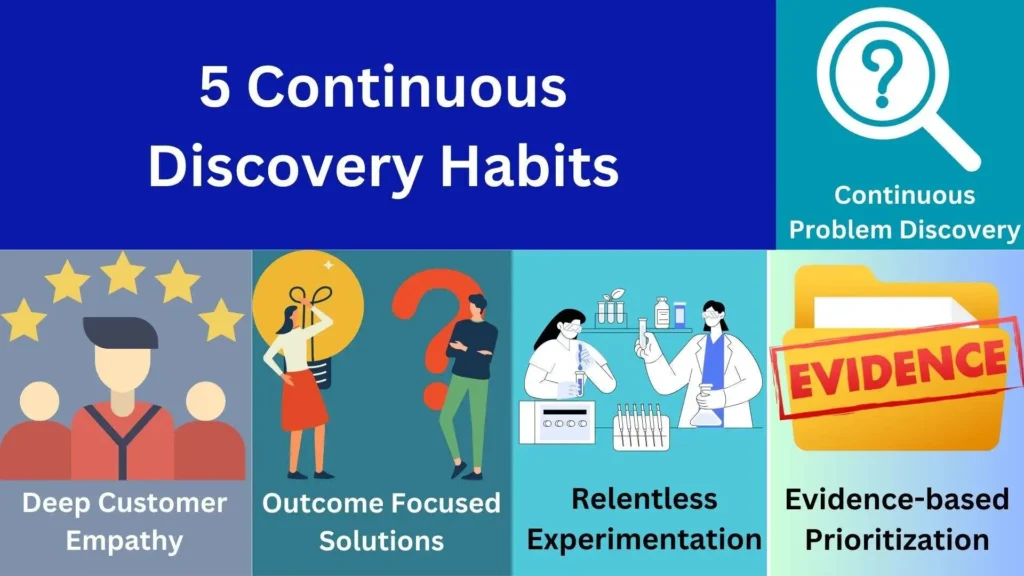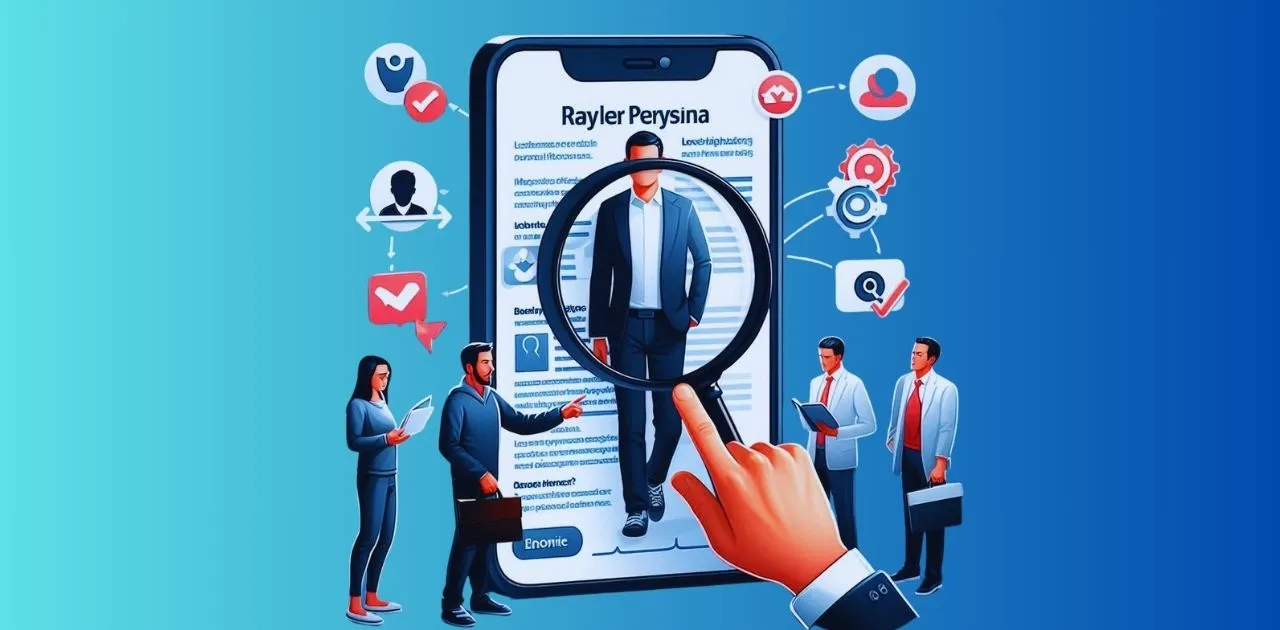To win today and forever, companies have to work on product organizations to deliver faster, best services to the right customer. Continuous discovery habits help businesses and organizations dominate the world through the analysis of their products.
The dynamic nature of digital products demands continuous adaptation and evolution. If you want to remain relevant, alive, and evolve with the changing needs, you must continuously strive towards it.
This blog sheds light on the essence of discovery management and continuous discovery, its significance, and the impact they have on organizations.
Table of Contents
Definition of Continuous Discovery
Discovery or discover is a simple word that means to know about or to investigate. Continuous discovery means the investigation of something without a break.
According to Teresa, continuous discovery is a two-step process. It is the process of continuously organizing, collecting, and analyzing data about your customers and their needs. The next step is using this data to inform or improve your product development and business strategy.
So, continuous discovery is a business terminology that helps firms analyze their progress and bring improvement. Firms always need evaluation of data to meet the needs of their customers. Continuous discovery habit is of great help to them if the data is collected and then analyzed with a keen eye.
Why is Continuous Discovery Important?
It is a complete and sustained practice product discovery bought for value addition. It is meant to bring development to a product. Continuous discovery gives value to customer’s choices and ideas. It works on the outcomes of the product, not the output.
Continuous discovery habits require an updated and informed mindset that can be adjusted according to customers’ needs. It also needs a change in the process and culture of the organization. Product discovery is a sign of development, and business or product teams carry out what to build.
In simple words, continuous discovery is the voice of customers that companies hear through product reports and data analysis.
Continuous Discovery Habits Book Review
Continuous Discovery Habits by Teresa Tores is a practical guide for companies. It provides a complete roadmap on how to develop a culture of continuous development and constantly add value to a product.
The book is divided into three parts and describes 5 continuous discovery habits in total. In the first section of the book, Tores explains what continuous discovery is and why it is important for organizations.
The second part outlines the habits and practices of continuous discovery, while the third section provides real-world examples and case studies.
You can also enjoy reading Habits of the Household book review.
5 Habits of Continuous Discovery
The following five continuous discovery habits are discussed by Teresa Tores.

1. Continuous Problem Discovery
The first factor in product development and continuous discovery is to identify the existing problems. As a company, you should have a proper team to recognize the potential problems that affect customers’ needs or expectations. Know the issues related to your product and gather data from real users.
For every problem, you have to present a unique solution to maintain the trust of customers. Ask for their opinions if possible and solve the problem according to their suggestions. Listen to them, what they want, what improvement can be done, etc. This strategy engages the investigation team in being curious and critical and seeking assistance from customers.
For example, a car company in the U.S.U.S. wants to launch a new model. The company needs to interview its permanent users and customers about the previous model. It should ask for any new features to be included or any pain points in the current model. The company has to work on the answers gathered through the interview.
So, continuous problem discovery is the first continuous discovery habit that will help you achieve your goals and success.
2. Deep Customer Empathy
Empathy is to feel what others want or feel. Customer empathy is understanding and valuing their needs. Actively listen to your customers’ viewpoints. Understand their voice, emotions, and feelings.
Companies or firms have to develop this habit because it helps them find solutions that best address the pain and problems of their users.
Motivation of customers is another aspect of this habit. Constantly motivate your customers to share their emotions about the pros and cons of the product. Please encourage them to share a candid view of the product. It depends on their opinions that you can make improvements.
For example, if Microsoft plans to launch a new version of its M.S. Office. Now, the company needs to ask users to experience it personally. It has to ask users who use M.S. Office on their mobile phones. The company should motivate them to present their sincere views and experiences.
Read emotional intelligence habits to understand the habit of empathy.
3. Outcome Focused Solutions
Every firm has to define and outline its outcomes before launching a product. They have to clearly define what they want and how they can achieve the target. The product team should then measure the outcomes and customer viewpoints with the established criteria.
Successful companies always consider outcomes instead of output. They also focus on the features and quality of the product. The investigation team needs to look for the outcome and then find a solution that describes the outcome.
For example, I met the vice-chancellor of my university. He is a man who motivated me to learn about continuous discovery habits. I asked him how he works, and his reply was, “ I have trained my mind and team for outcome-based solutions.”
He explained that I look at the outcomes of the institution and then order the team of directors to view the current study scheme and mode of learning, whether they suit the outcomes or not. If they don’t align with the outcomes of the institution, conduct a survey and prepare outcome-based solutions. That is how he has maintained the habit of continuous discovery.
4. Relentless Experimentation
This habit of continuous discovery encourages a culture of experimentation in the product team. It allows teams to learn quickly and avoid the unwanted features of a product.
Experiments are the best source of development. The collected data can be validated through experiments, or the company can experiment with new products. They have to formulate a hypothesis and then prove or validate it through interviews, questions, and reports.
For example, Dr. Haidar Ali, who made his cream product with the name Belladonna, conducted many experiments. Each time, the product development team surveys to get user feedback. After a thorough consideration of all the reports and feedback from potential users, he developed the cream, and now it is a top product.
5. Evidence-based Prioritization
The responsibility of the product team is to conduct research, collect data, and work on users’ suggestions for improving product quality. It is, therefore, necessary to use authentic data and find a solution to any issue based on evidence.
Evidence-based prioritization is one of the vital continuous discovery habits. If the results or data are used in another way, it can have serious implications for the product. The team should consider the feedback of the majority of potential users. Only then can they create a difference and positive impact.
For example, in the initial days of the discovery of habitcorner.com, one of the team members who was developing it reached out to me to open the website on my phone. Then he asked me to open it on my desktop. In the meantime, the person was noting something in his diary. I asked him why he needed it, and he said that it was a type of survey that needed improvement.
In a meeting with an SEO analyst, chief developer, and C.E.O., the same person presented some suggestions. Some of them were those that I was facing while opening the website. Then the developer asked him how he came to know about it. He showed the feedback on his survey as evidence, and they started working on it.
Important Lessons from Continuous Discovery Habits Book
Some of the important lessons that you can learn from the book ‘Continuous Discovery Habits’ book are given;
I. Focus on the User or Customer
The most important lesson and habit of continuous discovery is the customer-centric approach. Every business needs to know the needs of its users or customers and value their viewpoints.
II. Survey and Experiments
The base of continuous discovery is a series of experiments and surveys. It is through these experiments and data collection that you can understand and know the needs of your customers. It would help if you had a chain of surveys and a good product team for it.
Terresa Tore’s continuous discovery focuses more on the survey and product team.
III. Evidence-based Decision Making
Always make decisions on the basis of available evidence. Only add something new to a product in the presence of authentic data. Everything you add or bring new features should align with the feedback and data.
IV. Dynamic Mindset
Develop a changing mindset as the product market is ever-changing. You have to work in a dynamic market where adaptation to customer’s needs is vital for continuous discovery.
Conclusion
Continuous Discovery Habits book provide a framework for ongoing success and development. According to Teresa Tores, adaptation is the base of success in the modern business landscape. It urges organizations to embrace change and develop a customer-centric approach.
By following and understanding discovery management, a business can merge not just as a survivor but as a conqueror of tomorrow’s challenges.
FAQs
Are there specific tools or software recommended for conducting continuous discovery?
While there isn’t a one-size-fits-all solution, some popular tools for continuous discovery include user feedback platforms like User Voice or Usabilla, prototyping tools like InVision or Figma, and data analytics tools like Mixpanel or Hotjar.
Is continuous discovery primarily relevant for software or digital product development, or can it be applied to other industries?
While continuous discovery has its roots in software development, its principles can be applied to various industries, including manufacturing, healthcare, retail, and more, where customer feedback and adaptation are crucial for success.
What role does leadership play in fostering a culture of continuous discovery within an organization?
Leadership plays a crucial role in fostering a culture of continuous discovery by championing the importance of customer-centricity, providing resources and support for data-driven decision-making, and leading by example through their commitment to continuous learning and improvement.
Are there any ethical considerations or potential pitfalls to be aware of when gathering customer feedback for continuous discovery?
Ethical considerations include ensuring the privacy and consent of customers when collecting data, being transparent about how their feedback will be used, and avoiding biases in data interpretation that could lead to unfair or discriminatory outcomes.




